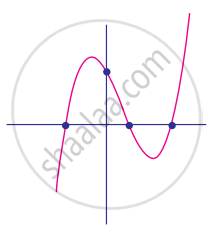Advertisements
Advertisements
Question
Verify whether the following are zeros of the polynomial, indicated against them, or not
p(x) = (x + 3) (x – 4), x = −3, x = 4
Solution
p(x) = (x + 3) (x – 4), x = −3, x = 4
P(–3) = (–3 + 3) (–3 – 4)
= (0) (–7)
= 0
P(4) = (4 + 3) (4 – 4)
= (7) (0)
= 0
∴ – 3 and 4 are the zeros of the polynomial.
APPEARS IN
RELATED QUESTIONS
Verify whether the following zeroes of the polynomial, indicated against them.
`p(x) = 3x + 1, x = -1/3`
Verify whether the following zeroes of the polynomial are indicated against them.
p(x) = 5x – π, `x = 4/5`
Find the zero of the polynomial in the following case:
p(x) = cx + d, c ≠ 0, c, d are real numbers.
Verify whether the indicated numbers is zeroes of the polynomials corresponding to them in the following case:
`f (x) = 2x +1, x = 1/2`
Find the number of zeros of the following polynomial represented by their graph

Zero of a polynomial is always 0
`-1/3` is a zero of 3x + 1
–3 is a zero of y2 + y – 6
Find the zeroes of the polynomial in the following:
q(x) = 2x – 7
If a, b, c are all non-zero and a + b + c = 0, prove that `a^2/(bc) + b^2/(ca) + c^2/(ab) = 3`.
